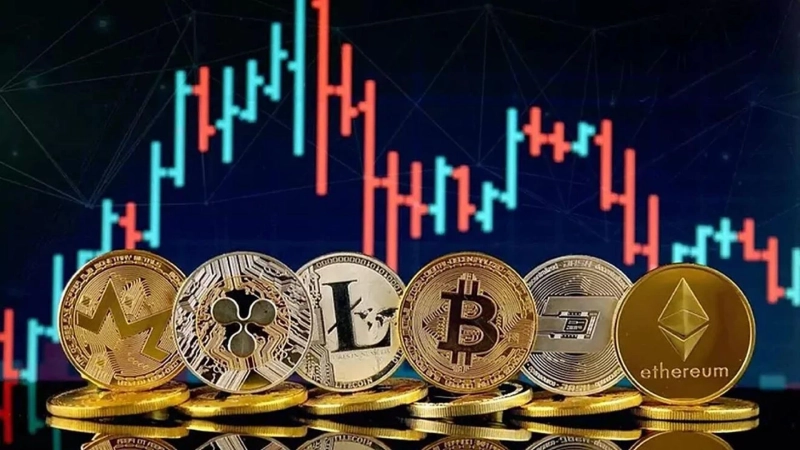The Web3 revolution is well underway, and its impact on the digital economy is undeniable. As the internet evolves into a decentralized space where users control their data, digital assets, and identities, the need for robust and feature-rich wallets has never been greater. Whether you're a DeFi enthusiast, an NFT collector, or a gamer exploring play-to-earn opportunities, the best Web3 wallet will be your gateway to this new digital frontier.
But what exactly makes a Web3 wallet stand out in 2025? The landscape is constantly changing, with new features and integrations that can help users navigate the complexities of Web3. In this article, we’ll discuss the key features your wallet needs to have to stay ahead of the curve in 2025.
1. Multi-Chain Support
One of the most significant advancements in the Web3 space is the rise of multiple blockchain ecosystems. As users flock to platforms like Ethereum, Binance Smart Chain (BSC), Solana, and others, the ability to interact with different chains seamlessly becomes crucial. The best Web3 wallet for 2025 will offer comprehensive multi-chain support, allowing you to manage assets across multiple blockchains in one place.
This feature is essential for anyone involved in decentralized finance (DeFi), NFT trading, or cross-chain staking. A Web3 wallet that supports multiple chains will ensure you're not locked into a single ecosystem and can take advantage of opportunities across various platforms.
2. Decentralized Identity and Authentication
With Web3, users have control over their own digital identity, making decentralized identity management one of the hottest trends. The best Web3 wallet will integrate with decentralized identity protocols like SelfKey or Ethereum Name Service (ENS), allowing you to manage your identity securely across different decentralized apps (dApps).
This means you won’t need to rely on traditional usernames and passwords anymore, which could be vulnerable to phishing or hacking. Instead, you can authenticate yourself using blockchain-based credentials, keeping your identity private and safe.
3. Integration with DeFi Protocols and dApps
The heart of Web3 lies in its decentralized applications (dApps) and decentralized finance (DeFi) protocols. Whether you’re lending, borrowing, staking, or earning yields, your Web3 wallet needs to integrate seamlessly with these platforms. A Web3 wallet in 2025 should come with built-in DeFi features like staking rewards, liquidity pool access, and lending protocols, enabling a smooth user experience without the need for third-party applications.
For example, MetaMask has integrated multiple DeFi protocols, allowing users to interact directly with decentralized exchanges (DEXs) and staking platforms without leaving the wallet interface. The best Web3 wallet will continue to expand this integration, allowing for easier and more comprehensive management of decentralized financial assets.
4. Native NFT Support
Non-fungible tokens (NFTs) are a cornerstone of the Web3 economy. In 2025, a Web3 wallet will need to offer robust support for NFTs, not just as a collection feature but also for interacting with metaverses and virtual worlds. The best wallets for this purpose will allow users to store, transfer, and display their NFTs directly within the wallet interface.
Some wallets already allow users to interact with NFT marketplaces like OpenSea, Rarible, or Foundation. In the future, your best Web3 wallet will enable NFT staking, rental, and even participation in virtual worlds—all through a single interface.
5. Enhanced Privacy and Security Features
Privacy is a central theme in Web3, and your wallet is the first line of defense in protecting your assets and data. As the decentralized web continues to grow, the best Web3 wallet will implement advanced privacy features, such as zero-knowledge proofs, anonymous transactions, and enhanced encryption.
Look for wallets that support hardware wallet integration, such as Ledger or Trezor, which store your private keys offline, making them more resistant to hacks. Multi-factor authentication (MFA) and biometric security (fingerprint, facial recognition) will become standard for Web3 wallets in 2025, ensuring that only you can access your digital assets.
6. Seamless Cross-Platform Experience
As the Web3 ecosystem continues to evolve, users will need to access their wallets from various devices, whether it's a mobile phone, desktop, or hardware wallet. The best Web3 wallet will ensure a seamless cross-platform experience, allowing users to easily switch between devices without losing access to their assets.
For example, Trust Wallet and MetaMask offer mobile and desktop versions, enabling users to manage their assets wherever they are. In 2025, this feature will be even more refined, ensuring that your wallet’s data syncs seamlessly across platforms while maintaining high levels of security.
7. Tokenized Asset Management
The future of Web3 will involve the tokenization of real-world assets like real estate, stocks, and even art. The best Web3 wallet in 2025 will offer features that allow users to hold and manage tokenized assets seamlessly. Whether it's owning a fraction of a physical asset or participating in a decentralized organization through DAOs, a Web3 wallet will need to integrate tokenized assets into your portfolio for easy management and access.
8. Interoperability with Web3 Protocols
Web3 is not just about decentralized finance or NFTs—it's about building a fully integrated digital ecosystem. In 2025, the best Web3 wallet will allow users to interact with a variety of Web3 protocols, from social media platforms and decentralized file storage to blockchain-based gaming and metaverse interactions. Wallets will need to provide seamless connectivity with Web3 applications, enabling a unified experience where users can access all of their digital assets, services, and interactions from one place.
Conclusion
As we move into 2025, the best Web3 wallet will be a comprehensive tool that combines ease of use, robust security, and deep integration with the decentralized web. Whether you're interacting with DeFi platforms, managing NFTs, or engaging with the metaverse, choosing a wallet that offers multi-chain support, enhanced privacy features, and seamless interoperability with dApps is essential.
The Web3 wallet of the future is not just a place to store your digital assets—it's a gateway to the decentralized internet. Make sure you’re ready for this next phase of the web by choosing a wallet that’s equipped for the demands of Web3 in 2025



